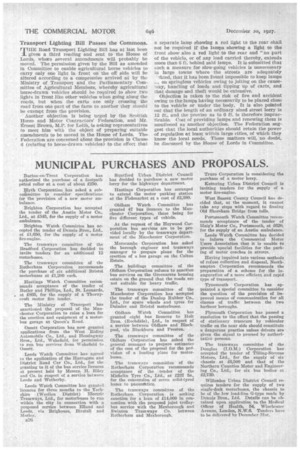Transport Lighting Bill Passes the Commons.
Page 44

If you've noticed an error in this article please click here to report it so we can fix it.
frtHE Road Transport Lighting Bill has at last been 1 given a third reading and sent to the House of Lords, where several amendments Will probably be moved. The permission given by the Bill as amended in Committee to enable agricultural horse vehicles to carry only one 'light in front on the off side will be altered according to a compromise arrived at by the Ministry of Transport and the Parliamentary Committee of Agricultural Members, whereby agricultural horse-drawn vehicles should be required to show two lights in front like other vehicles when going along the roads, but when the carts are only crossing the road from one part of the farm to another they should be exempt from the provision.
Another objection is being urged by the Scottish Horse and Motor Contractors' Federation, and Mr. Ernest Brown, M.P. for Leith, is asking representatives to meet him with the -object of preparing suitable amendments to be moved in the House of Lords. TheFederation are concerned about the provision in Clause 6 (relating to horse-drawn vehicles) to the effect that
a separate lamp showing a red light to the rear shall not be required If the lamps showing a light to the front show also a red light to the rear and "no part of the vehicle, or of any load carried thereby, extends more than 6 ft, behind said lamps. It is submitted that such a measure for slow-going vehicles is unnecessary in large towns where the streets are adequately 'Tilted, that it has been found impossible to keep lamps on springless vehicles owing to jolting on the causeway, handling of loads and tipping up of carts, and . that damage and theft would be extensive.
Objection is taken to the risk of fire and accident owing to the lamps having necessarily to be placed close to the vehicle or under the body. It is also pointed out that the length of an ordinary sized street lorry is 12 ft., and the proviso as to 6 ft. is therefore impracticable. Cost of providing lamps and renewing them is mentioned as another objection. The Federation suggest that the local authorities should retain the power of regulation at least within large cities, of which they know the local needs. These matters will, no doubt, be discussed by the House of Lords in Committee.




































































































